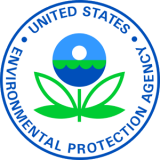Belton, SC businessman accused of mishandling lead from shooting ranges
Welch Group Environmental occupied this building on Belton Highway before going out of business. The company and its owner, Belton resident Glenn Welch, are accused in a federal indictment of violating the Clean Air Act and storing and disposing of hazardous waste without a permit.
Posted: July 16, 2016
SHARE
By Kirk Brown of the Independent Mail
Truckloads of bullets collected from shooting ranges were shoveled into the caldron nestled in a wooded area near Fair Play.
A kerosene jet heater was used to melt the bullets. Then workers with Welch Group Environmental would use one-gallon paint cans to scoop molten lead into molds, creating 25-pound ingots that the company sold.
At one point, the company was melting down 10,000-15,000 pounds of lead each week. And its workers were being exposed to dangerous fumes at levels exceeding federal standards, according to a 2011 report from the U.S. Department of Labor's Occupational Safety and Health Administration.
Now the company's owner, Belton resident Glenn Welch, is facing up to up to $800,000 fines and as many as 20 years in prison in connection with a federal indictment issued last week.
The indictment accuses Welch and his company of violating the Clean Air Act at two locations in Anderson County between November 2010 and May 2011. The indictment also says that Welch and his company knowingly placed another person in imminent danger of serious bodily injury.
Further, the indictment alleges, Welch and his company stored and disposed of hazardous waste without required permits.
Welch refused to answer any questions when approached by a reporter at his home, which sits on a two-acre tract along White Oak Road. The property has a market value of $407,000, according to county land records.
Last week's indictment comes after OSHA levied $500,000 in fines against Welch's company. The fines stem from 33 health violations discovered during inspections in 2010 and 2011 at its facilities in Anderson County and at a shooting range in Florida that the company was hired to clean.
Most of the health violations involved Welch Group Environmental employees being overexposed to lead. The company also was cited for failing to ensure that its workers were wearing properly fitted face-mounted respirators.
Prolonged exposure to lead can cause serious health issues in adults, including problems with concentration, high blood pressure, heart and kidney disease and reduced fertility, according the U.S. Centers for Disease Control and Prevention in Atlanta.
Eight of the company's employees who were cleaning the Delray Shooting Center in Delray Beach, Florida, had elevated lead levels in their blood, according to OSHA. At least two employees were exposed to more than nine times the permissible limit for lead while shoveling and sweeping at the shooting range.
Welch, who used to run a restaurant across the street from Belton City Hall, created Welch Group Environmental in 2006 to remove lead from shooting ranges across the nation.
An estimated 20 million gun enthusiasts visit 9,000 shooting ranges in the U.S. annually, and they generate thousands of tons of lead waste, according to the National Shooting Sports Foundation and the federal Environmental Protection Agency. Lead contamination has become a growing concern at some older shooting ranges, including a pair near San Francisco where cleanup costs have topped $20 million at each site.
Welch's company was housed in a building on Palmetto Parkway in Belton when a worker was burned in a June 2008 "flash fire," said Alan Sims, the city's fire chief.
Welch Group Environmental later moved to another building at 5034 Belton Highway near Neals Creek Baptist Church.
After being cited for health violations by OSHA, Welch Group Environmental was sued in Anderson County for failing to fully pay its worker compensation insurance premiums. Commerce and Industry Insurance Co. won a $29,927 judgment against the company in August 2012, court records show.
That same year, EPA officials sought help from the U.S. Coast Guard's Gulf Strike Team to help clean up the Welch Group Environmental site near Fair Play. The unit specializes in responding to environmental incidents.
Welch was among the featured speakers at Lead Management & OSHA Compliance workshops hosted by the National Shooting Sports Foundation in St. Louis and Atlanta in 2013 and in Charlotte last year, according to new releases from the organization. A spokesman for the foundation, which serves as the trade association for the firearms industry, did not respond to a phone message or email.
Welch Group Environmental went out of business before paying all of the fines levied by OSHA, agency spokesman Michael D'Aquino said in an email.
Last week, no one was in the locked building that the company previously occupied on Belton Highway. Through a broken window, rows of drums could be seen in a darkened garage.














 (Lenexa, Kan., July 18, 2016) - EPA Region 7 has reached a proposed administrative settlement with Goodrum Farm CR314, LLC, in Butler County, Mo., to resolve violations of Section 404 of the Clean Water Act (CWA). As part of the settlement, the company has agreed to pay a civil penalty of $15,000.
(Lenexa, Kan., July 18, 2016) - EPA Region 7 has reached a proposed administrative settlement with Goodrum Farm CR314, LLC, in Butler County, Mo., to resolve violations of Section 404 of the Clean Water Act (CWA). As part of the settlement, the company has agreed to pay a civil penalty of $15,000. 



